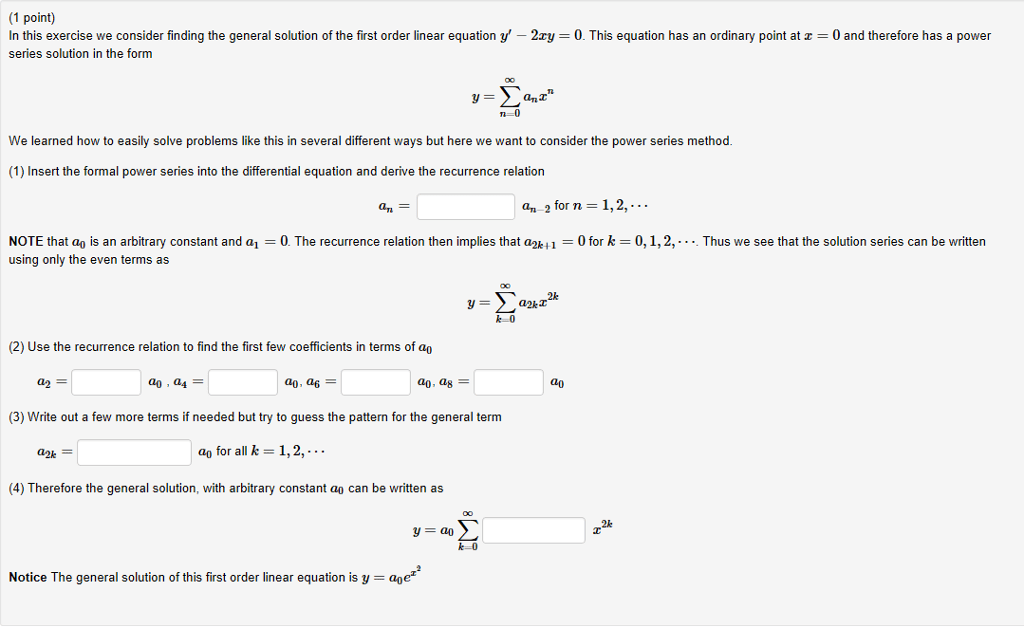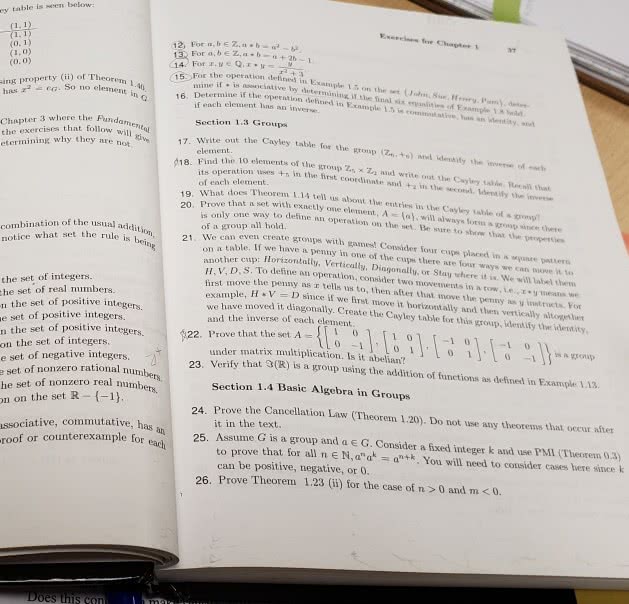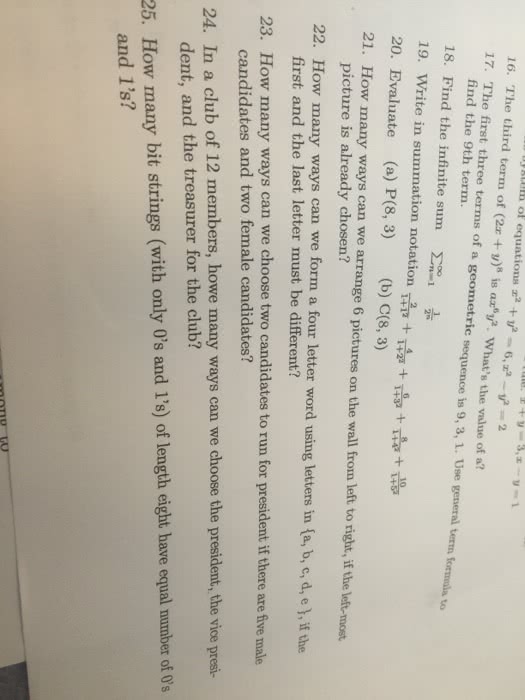MATH145 Lecture Notes - Lecture 17: Pascal'S Triangle, By2
42 views3 pages
13 Dec 2017
School
Department
Course
Professor
Document Summary
For n, k n with 0 k n (cid:16)n k(cid:17) = n! k! (n k)! n(n 1)(n 2) . (n k + 1) k! For n, k n with 0 k n, (cid:16)n. 0(cid:17) = 1, (cid:16)n n(cid:17) = 1, (cid:16)n k(cid:17) = (cid:16) n n k(cid:17), (cid:16)n k(cid:17) + (cid:16) n k + 1(cid:17) = (cid:16)n + 1 k + 1(cid:17) 17. 2 example. (a + b)5 = a5 + 5a4b + 10a3b2 + 10a2b3 + 5ab4 + b5. Binomial theorem for a, b r and n n we have the following formula (a + b)n = n. 1 (a + b)0 = 1 k(cid:17)ak bn k = (cid:16)0 (cid:16)n. X k=0 (a + b)1 = a + b. 0(cid:17)a1b0 + (cid:16)1 k(cid:17)ak bn k = (cid:16)1 (cid:16)n. Suppose, inductively, that (a + b)n = (cid:16)n. 2(cid:17)an 2b2 + + (cid:16) n n 1(cid:17)a1bn 1 + (cid:16)n n(cid:17)bn. Then (a + b)n+1 = (a + b)(a + b)n.
Get access
Grade+
$40 USD/m
Billed monthly

Homework Help
Study Guides
Textbook Solutions
Class Notes
Textbook Notes
Booster Class
10 Verified Answers
Class+
$30 USD/m
Billed monthly

Homework Help
Study Guides
Textbook Solutions
Class Notes
Textbook Notes
Booster Class
7 Verified Answers



